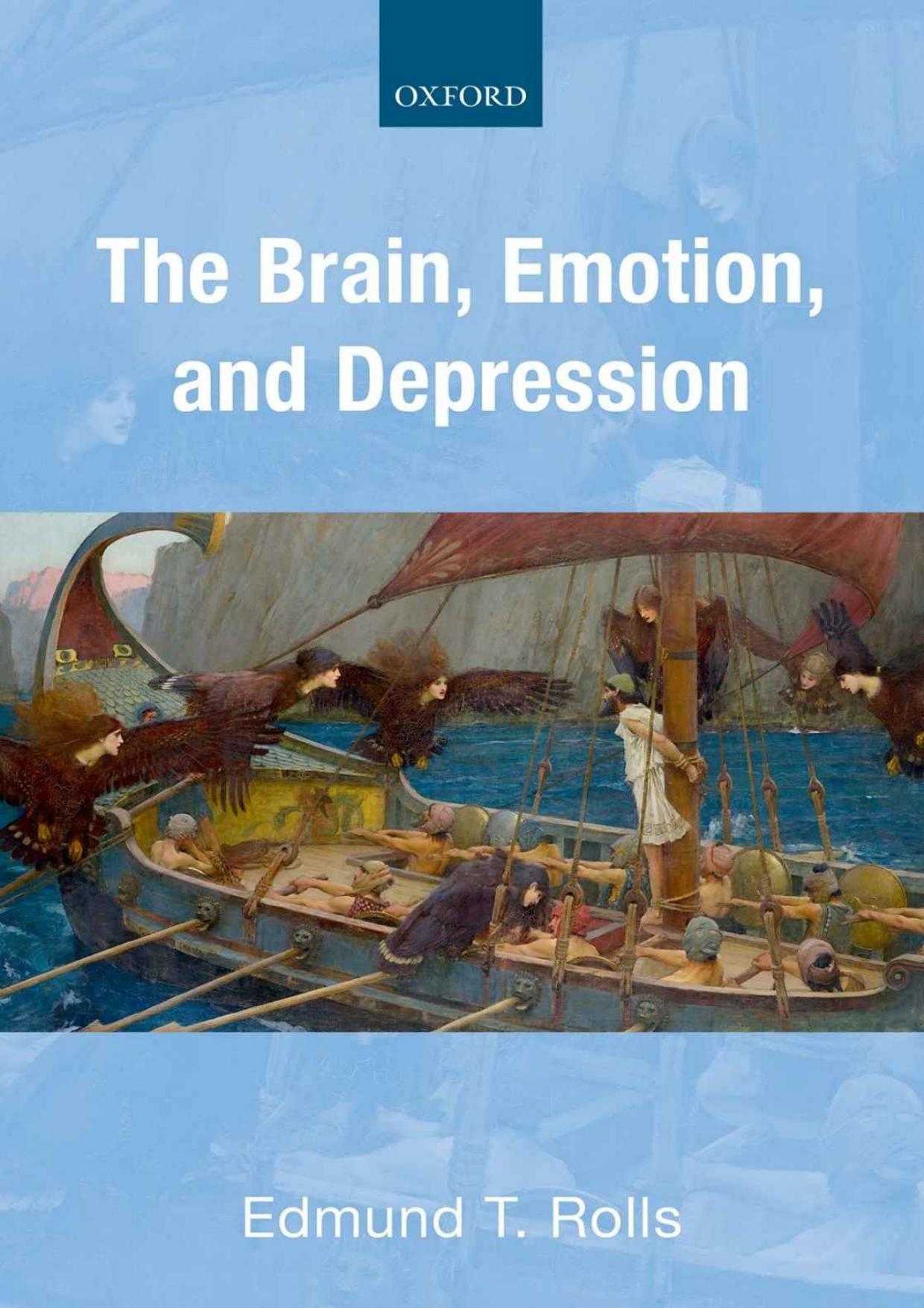The Brain Emotion and Depression 1st edition by Edmund 0192568221 9780192568229
$70.00 Original price was: $70.00.$35.00Current price is: $35.00.
Instant download Brain Emotion and Depression by Edmund T. Rolls The Edmund T. Rolls after payment
The Brain Emotion and Depression 1st edition by Edmund – Ebook PDF Instant Download/Delivery: 0192568221, 9780192568229
Full dowload The Brain Emotion and Depression 1st edition after payment

Product details:
ISBN 10: 0192568221
ISBN 13: 9780192568229
Author: Edmund T. Rolls
There are myriad questions that emerge when one considers emotions and decision-making: What produces emotions? Why do we have emotions? How do we have emotions? Why do emotional states feel like something? What is the relationship between emotion, reward value, and subjective feelings of pleasure? How is the value of ‘good’ represented in the brain? Will neuroeconomics replace classical microeconomics? How does the brain implement decision-making? Are gene-defined rewards and emotions in the interests of the genes? Does rational multistep planning enable us to go beyond selfish genes to plans in the interests of the individual? The Brain, Emotion, and Depression addresses these issues, providing a unified approach to emotion, reward value, economic value, decision-making, and their brain mechanisms. The evolutionary, adaptive value of the processes involved in emotion, the neural networks involved in emotion and decision making, and the issue of conscious emotional feelings are all considered. The book will be valuable for those in the fields of neuroscience, neurology, psychology, psychiatry, biology, animal behaviour, economics, and philosophy from the advanced undergraduate level upwards, and for all interested in emotion and decision-making.
The Brain Emotion and Depression 1st Table of contents:
1. Introduction: the issues
1.1 Introduction
1.2 Rewards and punishers, and learning about rewards and punishers: instrumental learning and stimulus–reinforcer association learning
1.3 The approaches taken to emotion and motivation: their causes, functions, adaptive value, and brain mechanisms
1.4 Emotion, motivation, and depression: the plan of the book
2. The nature of emotion
2.1 Introduction
2.2 The outline of a theory of emotion
2.3 Different emotions
2.4 Other theories of emotion
2.5 Individual differences in emotion, personality, and emotional intelligence
2.6 Cognition and emotion
2.7 Emotion, motivation, reward, and mood
2.8 Advantages of the approach to emotion described here (Rolls’ theory of emotion)
3. The functions of emotion: reward, punishment, and emotion in brain design
3.1 Introduction
3.2 Brain design and the functions of emotion
3.3 Selection of behaviour: cost–benefit ‘analysis’ of net value
3.4 Further functions of emotion
3.5 The functions of emotion in an evolutionary, Darwinian, context
3.6 The functions of motivation in an evolutionary, Darwinian, context
3.7 Are all goals for action gene-specified?
4. The brain mechanisms underlying emotion
4.1 Introduction
4.2 Overview of brain systems involved in emotion
4.3 Representations of primary reinforcers, i.e. of unlearned value
4.4 Learning associations between stimuli and primary reinforcers: emotion-related learning
4.5 The orbitofrontal cortex and emotion
4.6 The amygdala and emotion
4.7 The cingulate cortex and emotion
4.8 Insula
4.9 Effects of emotion on cognitive processing and memory
4.10 Summary of brain systems involved in emotion
5. Food reward value, pleasure, appetite, hunger, and over-eating
5.1 Overview
5.2 The control signals for hunger and satiety
5.3 The Brain Control of Eating and Reward
5.4 Obesity and the reward value of food
6. Pharmacology of emotion, reward, and addiction; the basal ganglia
6.1 Overview of the pharmacology of emotion
6.2 Dopamine systems in the brain
6.3 The basal ganglia as an output system for emotional and motivational behaviour
6.4 Opiate reward systems, analgesia, and food reward
6.5 Pharmacology of anxiety in relation to brain systems involved in emotion
6.6 Cannabinoids
7. Sexual behaviour, reward, and brain function
7.1 Introduction
7.2 Mate selection, attractiveness, and love
7.3 Parental Attachment, Care, and Parent–Offspring Conflict
7.4 Sperm competition and its consequences for sexual behaviour: a sociobiological approach
7.5 Female Cryptic Choice and its Consequences for Sexual Behaviour
7.6 Concealed ovulation and concealed estrus and their consequences for sexual behaviour
7.7 Sexual selection of sexual and non-sexual behaviour
7.8 Brain Regions Involved in the Control of Sexual Behaviour, and Especially in the Rewards Produced by Sexual Behaviour
7.9 Conclusion
8. Decision-making and attractor networks
8.1 Overview of decision-making
8.2 Decision-making in an attractor network
8.3 Implications and applications of this approach to decision-making
9. Depression
9.1 Introduction
9.2 A non-reward attractor theory of depression
9.3 Evidence consistent with the non-reward attractor theory of depression
9.4 Advances in understanding the functions of the orbitofrontal cortex and other brain systems in depression
9.5 Possible subtypes of depression
9.6 Implications for treatments
9.7 Pharmacological treatments for depression
9.8 Mania and bipolar disorder
10. Rational vs emotional routes to action, and consciousness
10.1 Multiple routes to action; reasoning vs emotion
10.2 A higher order syntactic thought theory of consciousness
10.3 Comparison with other theories of consciousness
11. Conclusions, and broader issues
11.1 Conclusions
11.2 Selection of optimal actions by explicit rational thought
11.3 Emotion and ethics
11.4 Emotion and aesthetics
11.5 Close
People also search for The Brain Emotion and Depression 1st:
the brain and depression
the brain and emotions
what is the emotional brain and what does it do
depression brain chemistry


